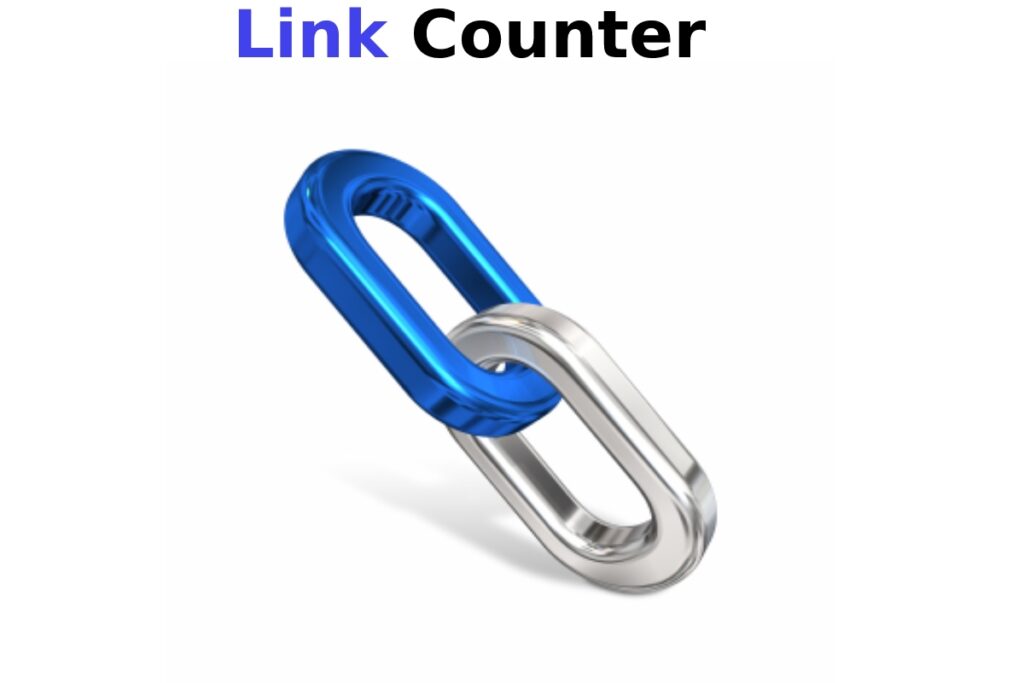The link type of each URL. The links counter will offer you a list of every link URL created on the page you entered into the search bar. The links counter also tells you which kind of link each of those URLs is.
Our proprietary link counter counts a diversity of different links in you’re website counting:
- Internal links
- External links
- Dofollow links
- Nofollow links
With our links counter device, you’ll get valued information including:
The URL of the individual link is included on the page. The links counter gives you a list of every link URL initiated on the page you arrived in the search bar.
The link type of each URL. The links counter also tells you which nice of link each of those URLs is.
Anchor text. You will also be capable of seeing what anchor text is used to link out to apiece URL.
Anchor type. The device will tell you if the URL is attached to part of the text or an image.
Do follow or No follow. The chart determination also tells you the status of each URL – whether it’s a do-follow link or a nofollow link.
Different Types of Link Counter
There are several types of link counters.
External link.
Internal Link.
Dofollow Link.
Nofollow Link.
Let’s know them deeper for better understanding.
External Link
External Link is when other websites link to your website. These links are too precious as they act as conviction signals after other sites.
So, once Google sees that you have some superior websites linking to your website, they get them as votes of sureness for your site.
For example ; Code Sample; <a href = “https://www.external-domain.com/ “>Link Anchor Text</a>
Optimal Format
Using descriptive keyword words in anchor text that reflect the same topic or target page is trying to target. It is unnecessary to use the exact keyword text every time doing so could trigger spam detectors. In its place, strive for a variety of anchor text that enhances context and usability for your users and search engines, as well.
External Link Defined
An external link is a link that points to an external domain.
Tops SEOs Believe that external links are the most crucial source for ranking power.
External links pass link equity (ranking power) instead of internal links because the search engines consider third-party votes.
Top SEOs do not believe that the “title” link attribute is used for rankings purposes.
In addition to these matrics, external links are essential for two reasons.
Popularity: As traffic is a “messy” metric and problematic for search engines to measure accurately (according to Yahoo! search engineers), external links are an even additional and straightforward metric to measure. Traffic numbers are suppressed in private server logs; however, external links are openly noticeable and easily stored. Aimed at this reason and others, external links are the excessive metric used for determining the popularity of a given web page. This metric (which is unevenly similar to toolbar PageRank) combined with relevancy metrics to determine the best results for a given search request.
Relevancy: Links offer relevancy clues that are tremendously valued for search engines. The anchor text rummage-sale in links is usually written by humans (who can interpret web pages better than computers) and is typically highly reflective of the content of the page being linked to. Numerous times this’ll be a small phrase (e.g., “best aircraft article”) or the URL of the target page (e.g., domain cited in a link and also deliver valuable relevancy metrics for search engines. Links incline to point to related content. This assists search engines in establishing knowledge hubs on the Internet that they can then use to validate the importance of a given web document.
Internal Link
Internal links help leader users and Google throughout your site. Deprived of internal links, it takes longer for Google to find every page on your site, whereas the use of internal links can help Google catch, crawl, and index your site pages quicker.
The earlier your pages are indexed, the faster they can be appearance in Google search results.
However, internal links don’t simply help Google discover other pages on your site; they also assist guide users did your site as well.
Yes; You can use internal links to refer users to pages near related topics that keep users on your site longer (and send positive signals to Google).
Code Sample <a href =http://www.same – domain.com/ “title=keyword text “> keyword text </a>.
Optimal format: Custom descriptive keywords in anchor text that give a sense of the source page’s topic or keywords.
Internal links help start site architecture and spread link parity (URLs are also essential). For this reason, In this section is about building an SEO-friendly site architecture with internal links.
Dofollow Link
A dofollow link is a link that helps in terms of SEO through passing the specialist of the origin site to the destination site. This passing of authority is called “link juice.” Acquiring do-follow backlinks will help improve a website’s domain authority or domain rating, which in turn helps to improve keyword ranking.
Nofollow Link
The no-follow link doesn’t boost your site authority since they don’t pass any link juice.
You could denote a nofollow link in your link code by adding rel = “Nofollow” tag.
Why Is it Important To Count Link?
Now that you understand the links that the links counter to account for, you could better know why it is well toward counting them.
The links counter can help you better understand sites that are linking to you, how many sites are passing link juice, and how many are not.
This impression can help you better understand your current search engine rankings and help you set future marketing goals.
For example, the uncertainty you see that your site only has three external links, and you could make it a goal to earn two more high-quality external links by the end of the quarter.


